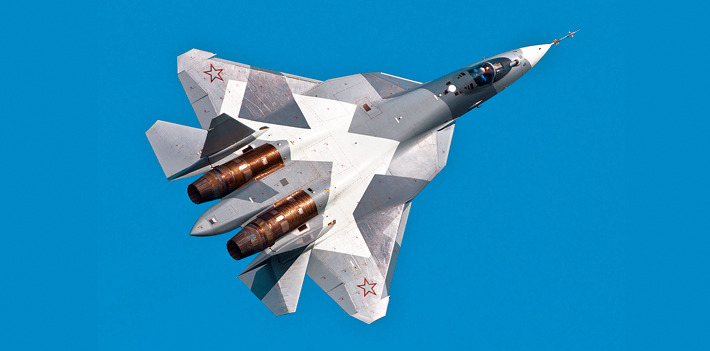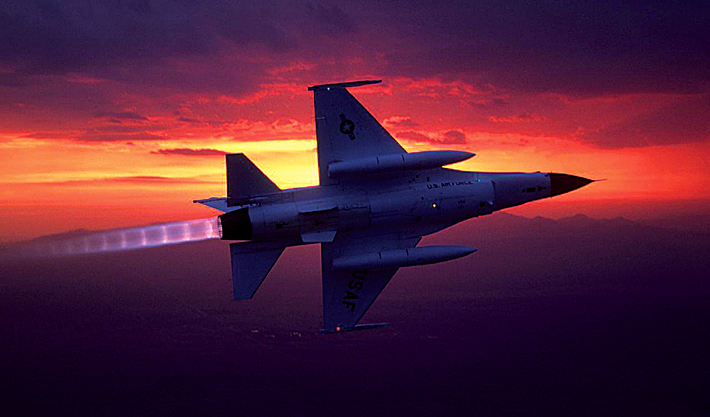INDIAN ARMED FORCES CHIEFS ON OUR RELENTLESS AND FOCUSED PUBLISHING EFFORTS

The insightful articles, inspiring narrations and analytical perspectives presented by the Editorial Team, establish an alluring connect with the reader. My compliments and best wishes to SP Guide Publications.

"Over the past 60 years, the growth of SP Guide Publications has mirrored the rising stature of Indian Navy. Its well-researched and informative magazines on Defence and Aerospace sector have served to shape an educated opinion of our military personnel, policy makers and the public alike. I wish SP's Publication team continued success, fair winds and following seas in all future endeavour!"

Since, its inception in 1964, SP Guide Publications has consistently demonstrated commitment to high-quality journalism in the aerospace and defence sectors, earning a well-deserved reputation as Asia's largest media house in this domain. I wish SP Guide Publications continued success in its pursuit of excellence.
Modernisation of IAF
The most important component of the inventory of the IAF that will give it the capability to project power effectively in the region is its fleet of combat aircraft

Backed by a rapidly growing economy, India is clearly emerging as a regional power. With the rise in status in the comity of nations, there is the logical and inevitable expansion of national interests that transcend the frontiers of the nation and in fact, today, extend from the Persian Gulf to the Strait of Malacca. However, the growing status in the evolving geopolitical and security scenario is accompanied by new challenges for the nation which ultimately translates to enhanced role and responsibilities for the armed forces of the nation as well. In this context it becomes necessary for the Indian Air Force (IAF) to keep pace with the times to fulfill its mandate as the “spearhead” of national military power.
State of the Combat Fleet of the IAF
The most important component of the inventory of the IAF that will give it the capability to project power effectively in the region is its fleet of combat aircraft that must have adequate reach, firepower through modern stand-off and precision-guided munitions and stealth characteristics. Unfortunately, the state in which the combat fleet of the IAF is in today, leaves much to be desired. Currently, the size of the fleet of combat aircraft authorised by the government is 39.5 squadrons. The government has now sanctioned the raising of another 2.5 squadrons taking the strength to 42 squadrons by the end of the Fourteenth Five Year Plan, ie 2027. With around 20 aircraft in a squadron, the IAF should rightfully have 840 of the fourth- to fifth-generation platforms by 2027.
Viewed against this requirement, the strength of actual holdings of combat aircraft in the IAF is somewhat disconcerting. The MiG-21 fleet, whose induction had begun after the Sino-Indian conflict in 1962, has been overtaken by obsolescence and a sizeable number of this aircraft along with the fleet of MiG-23 has already been retired from service. Consequently, the number of combat squadrons on the inventory of the IAF has dwindled to 33 (660 aircraft). With more of the ageing MiG-21 and MiG-27 aircraft that would be retired from service by the end of this decade, the number of squadrons is expected to come down to around 25 (500 aircraft). Cancellation in 2015 of the tender for 126 medium multi-role combat aircraft (MMRCA) floated in 2007 for which the Rafale from Dassault of France was identified by the IAF as the preferred platform has only served to aggravate the problem for the combat fleet. Induction of the 36 Rafale jets five years from now to equip two squadrons, for which the contract has been signed in September last year, and the indigenous HAL-built light combat aircraft (LCA) Tejas being produced at the rate of eight aircraft per year, will be able to only partially compensate for the current and future deficiencies on account of the numbers being phased out.
As no other combat platform is expected to be inducted by 2022, at best the IAF will be able retain the strength of combat squadrons at 33, nine short of the authorised strength of 42 squadrons. Going at this rate, by 2027, the IAF will be left with effectively 15 squadrons of Su-30MKI, two squadrons of Rafale jets and hopefully four squadrons of the LCA Tejas at best, a total of 21 squadrons (420 aircraft) as against the authorised level of 42 squadrons (840 aircraft), a deficiency of 50 per cent. All variants of the MiG-21 currently in service with the IAF would be retired by then and the other fleets, i.e. of the MiG-29, Mirage 2000 and Jaguars will be nearly at the end of their total technical life. The IAF cannot afford to bank on these dying fleets that have already rendered yeoman service. The IAF would therefore need to induct around 450 combat aircraft by 2027 if it has to maintain is operational edge over its adversaries as also be in a fit state to confront the challenges to national security if and when called upon to do so.
Meanwhile, HAL has entered into collaboration with United Aircraft Corporation (UAC) of Russia to develop a fifth-generation fighter aircraft (FGFA), a derivative of the Russian T-50 PAK FA which is already in the test-flying phase in Russia. The Indian version will be a two-seater platform for pilot and copilot or a weapon system operator. Although the project was conceived a decade ago, it has been plagued with problems that often seem insurmountable. It would not be prudent for the IAF to bet on the FGFA as there is no certainty about the time frame in which the product will be available.

Combat Aircraft Made in India
That the government is definitely aware and concerned about the looming crisis with regard to the combat fleet of the IAF, is evident in the fact that a proposal has been made to some of the global aerospace majors who have produced highly successful fighter aircraft, to consider setting up a production line in India to manufacture their aircraft not only for the Indian market, but for the global market as well. With focus being on single-engine fighter aircraft, proposals have been sought from Lockheed Martin of the United States for the F-16 Fighting Falcon Block 70 and from Saab of Sweden for the JAS-39 E Gripen, both currently under development.

In their response to the communication from the Ministry of Defence (MoD), the American aerospace and defence major Lockheed Martin has offered to relocate their only functioning production line of the F-16 from its present location in Fort Worth, Texas, to one in India as decided upon by the Indian Government. The original equipment manufacturer (OEM) will also be required to provide full transfer of technology, a precondition that will be a subject of negotiations. The platform will then be manufactured exclusively in India to meet the requirement of the IAF as also the 25 other operators of the aircraft across the world. The state-of-the-art F-16 Block 70 is a fourth-plus-generation aircraft being developed by Lockheed Martin exclusively for the IAF. This platform is an evolution of the proven design and is equipped with next-generation technology that will provide the required combat capabilities in a scalable and affordable package. One fall out of the relocation of the production line of the F-16 to India could be that Pakistan may have to phase out the fleet from its air force! As of 2015, the F-16 is the second most common fighter aircraft currently operational in the world. It was also one of the contenders in the unsuccessful Indian tender for 126 MMRCA.
The other option before the IAF is the JAS-39 E Gripen from Saab of Sweden, another erstwhile contender in the failed MMRCA tender. Saab has offered to ‘Make in India’ its fifthgeneration and most advanced fighter aircraft. The Gripen has been designed as a small platform capable of carrying relatively a large payload. It is powered by the American GE F-414 engine and is equipped with an AESA radar obtained from Britain. Its infrared search and track system is from Italy, while a large part of the airframe is built in Brazil. The Gripen is reputed to have the lowest operating and life-cycle cost as compared to its contemporaries. The head of Saab’s aeronautics division has offered to provide full transfer of technology should India select this platform for its ‘Make in India’ scheme.
MMRCA
The Minister of Defence Manohar Parrikar has stated that while the IAF is currently looking at induction of a single-engine fighter aircraft, there may be a requirement of a twin-engine platform as well. This was only to be expected as the MMRCA tender had envisaged a twin-engine 25-tonne class aircraft for which the F/A-18 Super Hornet from Boeing was eminently suitable. Should the IAF initiate a proposal to induct a twinengine combat aircraft, the F/A-18 Super Hornet will be back in reckoning. Incidentally, the F/A-18 was initially developed essentially for the US Navy to operate from aircraft carriers. Later a land-based version was also developed. The F/A-18E/F Super Hornet was one of the six contenders for the MMRCA contract. Coincidentally, soon after the Indian Navy announced that it was not quite happy with the naval variant of the Tejas and was looking for other options, a request for information (RFI) was floated in January this year by the MoD pertaining to the proposed acquisition of 57 carrier-capable fighter jets. In case the Indian Navy is looking for a twin-engine fighter, the requirement of the IAF could well be linked with the acquisition for the Indian Navy to make the numbers to be inducted large enough for making it viable for the selected OEM to set up production facility in India. The choice of the F/A-18 Super Hornet could well be an appropriate one.
The Final Word
While relocation of facilities for the production of combat aircraft would be a complex exercise, the OEMs involved appear keen and willing to execute the project soonest possible. However, as the requirement of inducting combat aircraft in large numbers into the IAF to obviate debilitating erosion of operational capability is urgent, it would be incumbent on the government and the IAF to select the right vendor quickly, conclude the contract without delay and not allow the process to fall victim to bureaucratic impediments, a malaise that that will surely blunt the “spearhead”.





